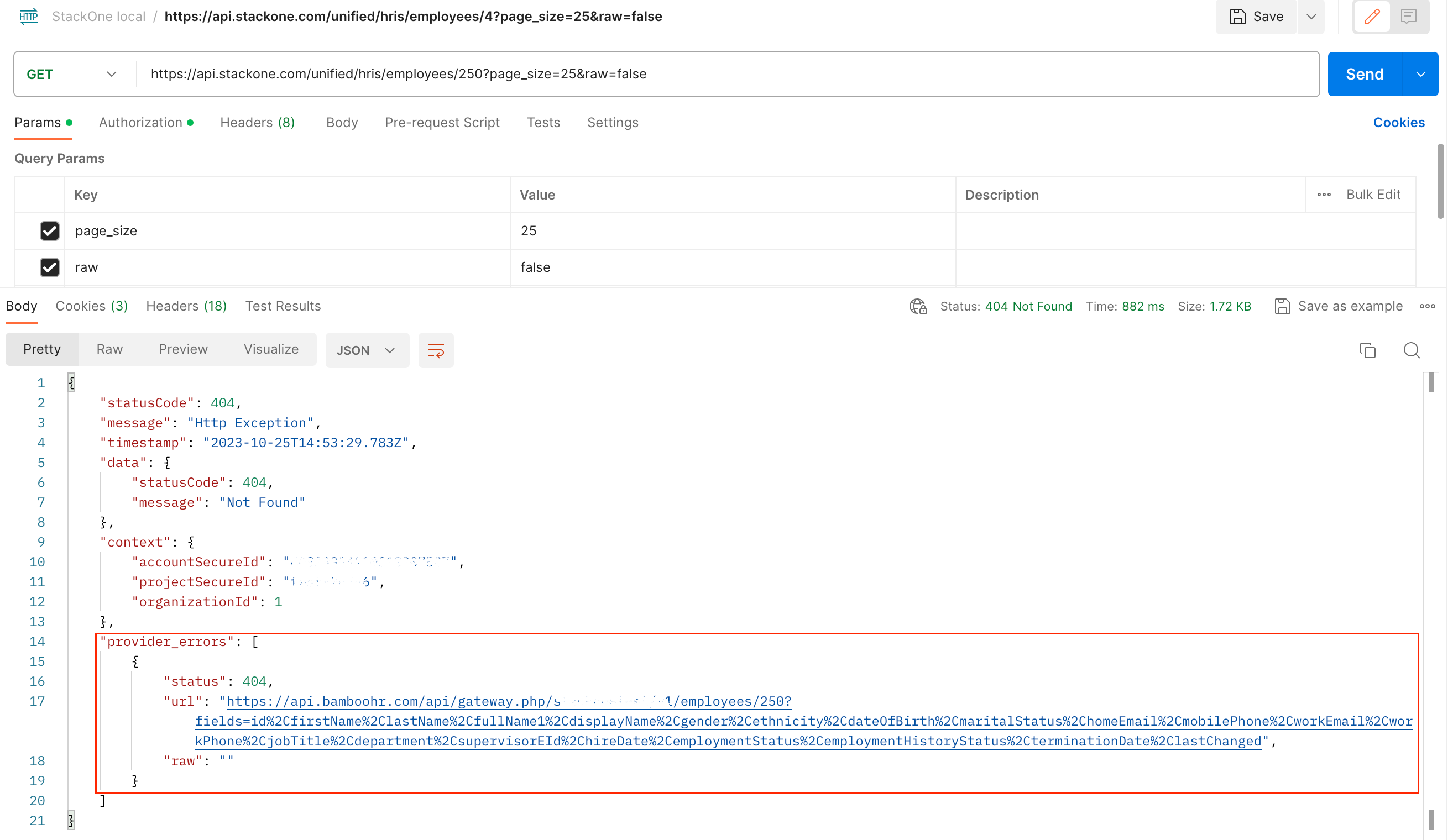Understanding Error Codes
Below is a table detailing common error codes returned by the Unified API, their meanings, and common remediation steps:| Error Code | Description | Probable Cause | Remediation Steps |
|---|---|---|---|
400 | Bad Request | Incorrectly formatted request parameters (request parameters do not follow expected schema and fail validation) | Ensure all request parameters are correctly formatted and try again.
|
401 | Unauthorized | Invalid API key or access token. | Double-check your credentials and ensure they’re valid. |
403 | Forbidden | StackOne API key provided or linked account token lacks required permissions or the linked account tokens. Additionally, security mechanisms may block requests that appear suspicious or malformed. | Verify the scopes of your API token and request necessary permissions.
Include a valid User-Agent header with every request. This is a standard HTTP best practice and helps our security systems identify legitimate clients and avoid blocking requests as suspicious or malformed. |
404 | Not Found | The requested resource doesn’t exist, possibly due to an invalid ID. | Double-check the resource IDs in your request and ensure they are valid. |
408 | Request Timed Out | The request took too long to complete (>60 seconds) and has been aborted - this could be due to integration provider rate limits or processing delays. StackOne automatically retries failed requests up to 5 times within the request lifetime before returning this timeout. | Respect received Retry-After headers to alleviate pressure on provider systems and avoid concurrent requests to the unified API. The Retry-After header contains either the original provider’s retry guidance or a default 60 seconds. |
409 | Conflict | The resource to be created already exists | Check that the resource doesn’t already exist before creating it. |
412 | Precondition Failed | Endpoints using x-account-id may return 412 if the linked account is suspended or expired. Test accounts expire after a set period (typically 90 days) and cannot be used for API requests once expired. | Check the status of the linked account. If the account is suspended, re-enable it if necessary. If the account is expired (test accounts only), create a new test account or convert it to a production account. |
422 | Unprocessable Entity | The payload data for creating a resource doesn’t match what the endpoints expect | Verify that the data sent follows the StackOne API reference. Look at the additional details if available in provider_errors for any additional information from the provider. |
429 | Too Many Requests | Rate limits exceeded. Can be returned by the underlying integration provider or StackOne. When received from integration providers, StackOne automatically retries up to 5 times using the provider’s Retry-After header before returning the original 429 response. | Implement exponential backoff for retries and ensure your requests are within rate limits. StackOne handles automatic retries for provider rate limits, so you typically only need to handle the final 429 response. See Rate Limiting for more information. |
500 | Server Error | Internal StackOne server issue. | Notify StackOne support if the issue persists. |
501 | Not Implemented | This endpoint hasn’t been implemented for this connected provider | Skip the call or contact StackOne support for more information. View endpoint support via the Meta endpoint. |
502 | Bad Gateway | The underlying Provider API has returned a 500 error | Read any additional details available in the response data and ensure the resource exists. |
Note:For any unresolved issues or further assistance, feel free to contact our support team directly via your dedicated slack channel or at [email protected].
provider_errorsWhen the underlying provider API returns an error, the StackOne unified API will include any data returned by the provider related to the error in the response data (in the provider_errors array). For example, 404 error is returned, because an employee with id = 250 does not exist.

